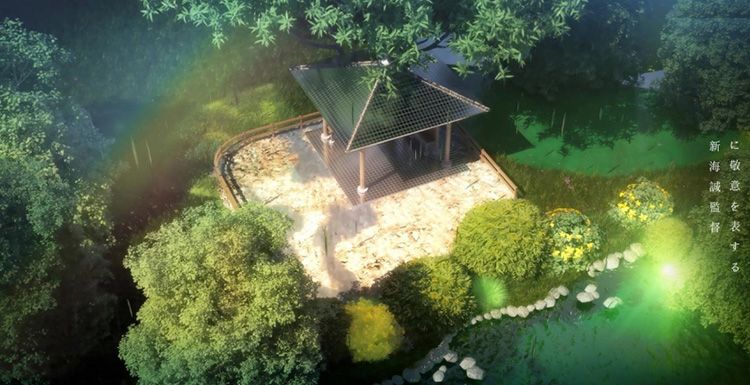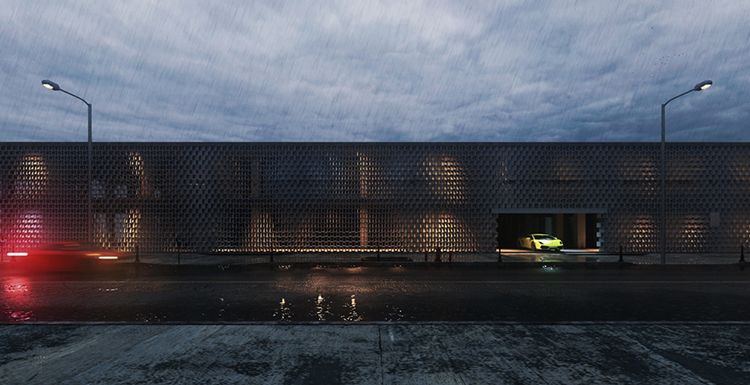72 Tips And Technical For V-Ray in 3ds Max That You Should Know

In writting this article, the leading cloud rendering service provider and the best render farm, Fox Renderfarm wants to share some tips in the rendering process for V-Ray in 3ds Max, which can save rendering time and improve rendering speed.
-
Try to limit the number of Ploygons, the less the faster rendering speed.
-
If you use V-Ray, use Proxy instead of the high-surface model.
-
When making shadows, subdivisions are best not to be too high.
-
Remove unwanted objects from the scene.
-
If the model is very small on the output screen, the texture resolution should not be too high.
-
Avoid excessive use of glossiness and highlights. You can achieve approximate results with simple diffuse, bump and reflection (0.95 ~ 0.75). Also try not to use Archshaders.
-
Use the high number of models near the camera or the main visual range.
-
When V-Ray is used in outdoor scenes, the built-in direct light (such as the sun made by yourself) and V-Ray's ambient light are much faster than V-Raysun and sky. You only need to adjust the color to achieve V-Raysun and sky effects.
-
Understand the difference between copy and instance, and the appropriate application, simple but effective.
-
Clear the undo data, especially the list of commands in the command line above, because this will eat a lot of memory. There is a need to clear, undo is not enough and it is very troublesome.

-
Regarding system resource management, turn off anti-virus software (such as norton or mcafee) when rendering, because this will slow down.
-
It is best to use textures in the details of the model.
-
Use the xref scene.
-
Optimize the model, such as using polycruncher and other plugins, MAX2010 already has ProOptimizer.
-
When making smooth surfaces (curves/meshsmoothing), note the value of iteration.
-
When using V-Ray's irradiance map, check the interpolation so that the value is the same as the reflection and refraction interpolation in the submenu.
-
Are you sure you want to use the time killer caustics effect?
-
When V-Ray renders, the first pass selection, brute force vs. irradiance map, is judged according to the case.
-
The core parameters, noisehreshold (noise threshold) and AA (AntiAlias) subdivision (anti-aliased subdivision), based on the case.
-
Fine-tune the parameters of glossy reflection and frosted materials, based on the case.

-
Use render elements to make various channel outputs. Then do the post-synthesis system, which can shorten the rendering time, such as using some common synthesis software AE, Combustion, etc.
-
Evermotion Archshaders and Archinterior/Exterior's default material settings are time killers that need to be adjusted and rendered.
-
Commonly used Irradiance and Light Cache (save to file) options, if the scene is unchanged, you can skip the calculation part, directly access the cached data graph, and the rendering speed will be faster.
-
A balance is achieved between the output screen resolution and the irradiance map setting.
For example, if you are 3600pixel large image, set min/max=-4;-3 (equal to "very low" preset option), interp. samples to 25 (smooth surface). or min/max=-4;-2.
-
Before setting all the shaders, try to place the material in the Override mtl: Material button in the V-Ray: Global switches in the render dialog. Then test which parameter values are the fastest and the best. Use this method to get the optimal settings.
-
Too much light will also consume rendering time.
-
When rendering the test, please use the preset parameters, the speed is faster.
-
ADAPTIVE QMC improves detail and is slower; Adaptive Subdivision makes the picture smoother and less detailed, but faster. Based on the case.
-
Please check the render region division, region sequence, etc. in Raycast Parameters.
-
When using V-Ray's displacement, if 2d mapping and related settings eat a lot of memory, please limit the use area of the displacement.
-
It is recommended to use 3ds max 64 bit.
-
Using the X-refs feature allows you to manipulate large, bulky external reference scenes in the main scene.
-
3ds Max handles 9000 scenes with 10k facets more efficiently than 200000 1K facets. So attaching objects can increase execution efficiency.
-
Using mrProxy or V-RayProxy in Mental Ray or V-Ray, Proxy is designed to efficiently load models and renders.
-
Bitmap Proxies: Reduces the amount of memory consumed in the scene.
-
Data resources are concentrated in one path for management, not to be scattered around.
-
Local computer operations can avoid the damage caused by remote network traffic jams or files. Remember to do backups often.
-
3ds Max users with a systematic organizational concept know how to use Layers, Groups and Selection sets.
-
Write MAX s to simplify heavy work and increase productivity.

-
Photoshop and post-production software (AE, Combustion) will be used, which will save a lot of rendering time.
-
Good knowledge of photography, training your own visual observation ability, you can immediately see where you need to modify and immediately stop rendering when rendering, you don't have to wait until you finish it to judge whether it is good or bad.
-
If the texture is too large, such as 3600pixel or above, please lower the AA (anti-aliasing) value, min/max=-1; 2.
-
Make sure to turn on the system multi-threading option.
-
Use a smaller size for the rendering test.
-
Area Rendering: Only test the important range, so have more time to check the Shader and adjust the results you want.
-
Try not to add Glossy (gloss, highlight) effect unless you think the effect will be good.
-
The more the number of scene model faces, the more memory is consumed. Some techniques can reduce the amount of RAM used. Adjust the Raycaster settings in the System volume column (reducing Max. levels, increasing Min. leaf size, increasing Face/level coefficient, switching Static to Dynamic) Default Geometry).
-
When rendering, using 2d displacement mapping will consume a lot of rams, especially large displacement maps. If so, you can use 3d displacement mapping. If you have multiple Displacement modifiers, but share a displacement map, And to set the same parameter value, it is best to replace the Displacement modifier with the attribute instance, that is, multiple models share a Displacement modifier.
-
Bitmap filtering: Summed area uses more RAM than Pyramidal. Summed area is only suitable for smaller textures.
-
Shadow maps obviously consume RAM, you can use raytraced V-RayShadows instead.
-
When the scene has only a simple model (no fine-grained model), you can use only the first Light Bounces.
-
Image sampler (AA anti-aliasing): V-Ray's anti-aliasing function requires a large amount of RAM to store data. The amount of memory depends on the bucket size (Rendering region division) and sampling rate (sampling rate). To reduce memory usage, you can reduce it. The bucket size and the use of different Image sampler, such as Adaptive QMC sampler memory usage is less than the Adaptive subdivision sampler.
-
Global illumination caches: Irradiance maps, photon maps and V-RaylightMtl maps all require additional memory for storage, with separate methods to control RAM.
For example, the memory usage of Irradiance maps is based on the number of samples, so you can lower the Min/Max value and use the loose threshold values (higher Color threshold, higher Normal threshold, lower Distance threshold).
For example, the memory usage of photon maps is based on the number of photosns, which can reduce the Diffuse subdivs of V-Ray material or increase the maximum Max. density.
-
Decrease the trace depth as much as possible.
-
Even if V-Ray's VFB (Visual frame buffer) is selected, MAX's VFB will still be colored, taking up extra RAM. You can turn off the "GET RESULOTION FROM MAX" option and set the MAX output resolution to 100×100. Set the correct resolution of V-Ray VFB.
-
Sometimes it is considered that the rendering settings are slower. If you check the scene carefully, see if there are any unused Polygons, or if there is any useless material in the Polygon? shader editor outside the Camera lens? Affect the speed of Render.
-
Sometimes the model in AutoCad is far from the coordinate center, and we call it in max, but render is very long, you can move this model to the coordinate center [0,0,0] position in AutoCad.
-
Avoid overlapping models, so you must raise the render setting to remove spots or blemishes.
-
It takes a lot of time to calculate a large image, so you can use a similar Super Render to split the block rendering.

-
Do not increase the Reflection/refraction value in V-Ray Global swithces, about 2~3 to meet most of the requirements.
-
The REFLECT ON BACKSIDE parameter can be turned off in the Option option of the V-Ray material.
-
If you spend a lot of time to render a flat and ungraded result, and similar to the contour map, you can check the Use interpolation in the reflection in the shader, and then adjust the reflect interpolation min/max = -3 in the Reflection volume.
-
Avoid using the Bump map with the glossiness of the check-in interpolation, which will produce a lot of impurities.
-
If you render 3600pixel and other large images, you can only count small sheets, such as 1600 or 2200, then use the PS/PP profit filter, or zoom in ssplinepro, unless the laser output, no one will notice.
-
Irradiance map with light cache can meet most of the rendering quality requirements.
-
After determining the GI solution (such as Irradiance + light cache), the setting of image sampling and antialiasing becomes extremely important.
-
The HSph. subdivs of Irradiance maps are adjusted upwards from 20 until the impurities are removed. Generally, good results can be obtained between 20 and 50.
-
The default min/max=1 of the Adaptive QMC sampler; 4 is only used for testing, min/max=3; 6 meets most high quality requirements, and the best between min and max should not exceed 2 or 3.
-
When Light Cache's Subdivs value is used for testing purposes, 100 is used for large scenes; 250 is used for small scenes or indoor scenes. When used as product output, multiply by 10, 1000 for large scenes; 2500 for small scenes or Indoor scenes (more details). In actual rendering, adjust according to the current environment.
-
Avoid using the DOF of the physical camera, you can use other plugins instead.
-
After all, using a render farm or cloud rendering farm can make the works more realistic, most useful in time-saving and money saving.
Recommended reading
Top 9 Best And Free Blender Render Farms of 2025
2024-12-30
Revealing the Techniques Behind the Production of Jibaro "Love, Death & Robots", Which Took Two Years to Draw the Storyboard
2025-02-10
Top 10 Free And Best Cloud Rendering Services in 2025
2025-03-03
Top 8 After Effects Render Farm Recommended of 2025
2025-02-10
Top 5 Best and Free 3d Rendering Software 2025
2025-02-10
Shocked! The Secret Behind Using 3D to Make 2D Animation was Revealed!
2025-02-10
How to Render High-quality Images in Blender
2024-12-04
Easy Cel Shading Tutorial for Cartoon in Blender Within 2 Minutes
2025-02-10
Partners
Previous: Create Flame Effects with Phoenix FD for 3ds Max Tutorial
Next: 3ds Max Tutorial: Car Modeling
Interested






